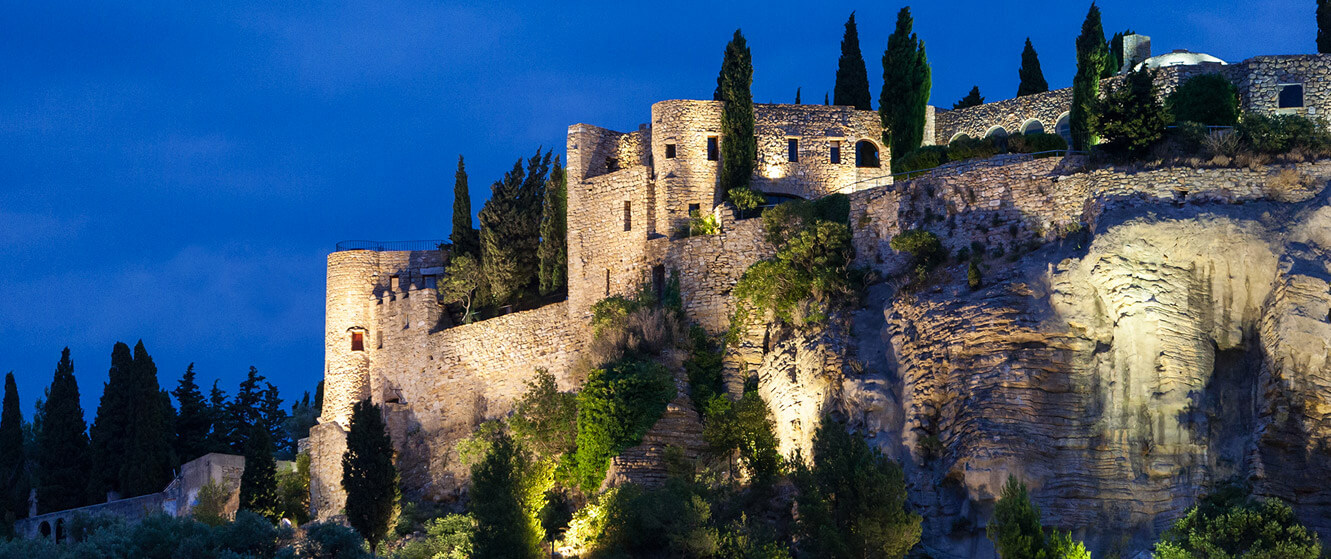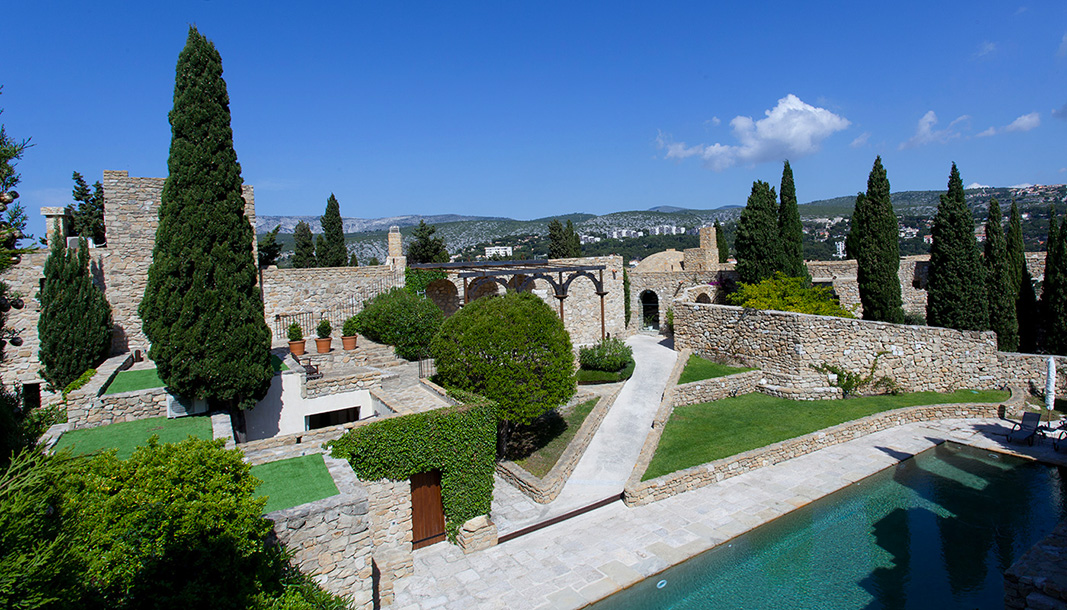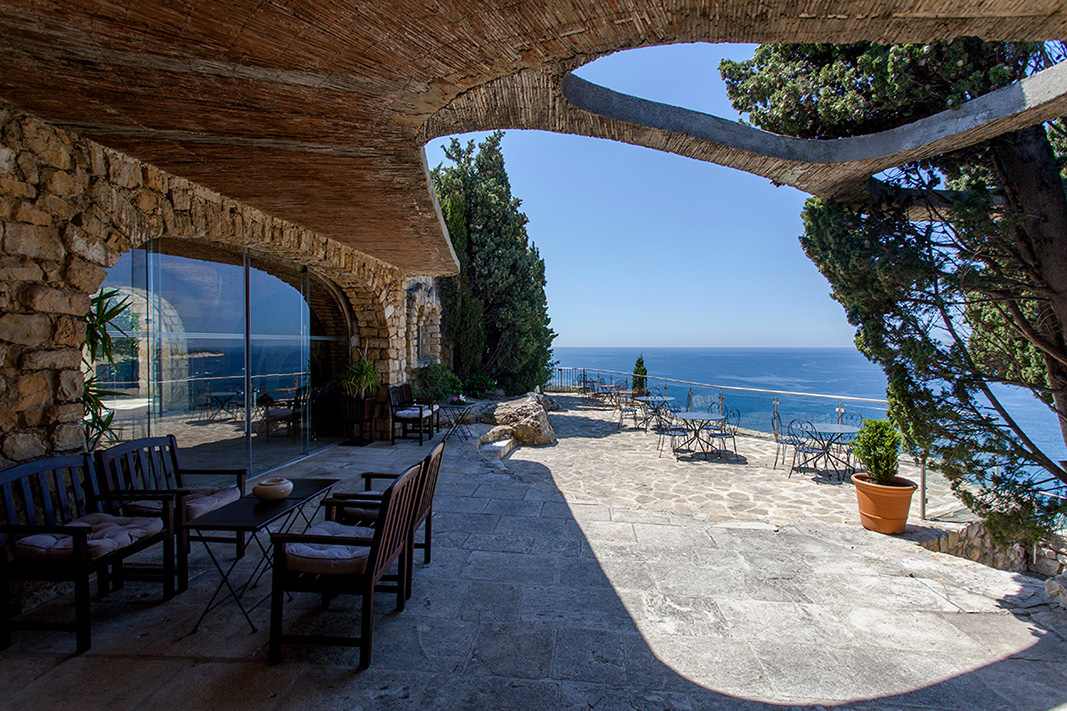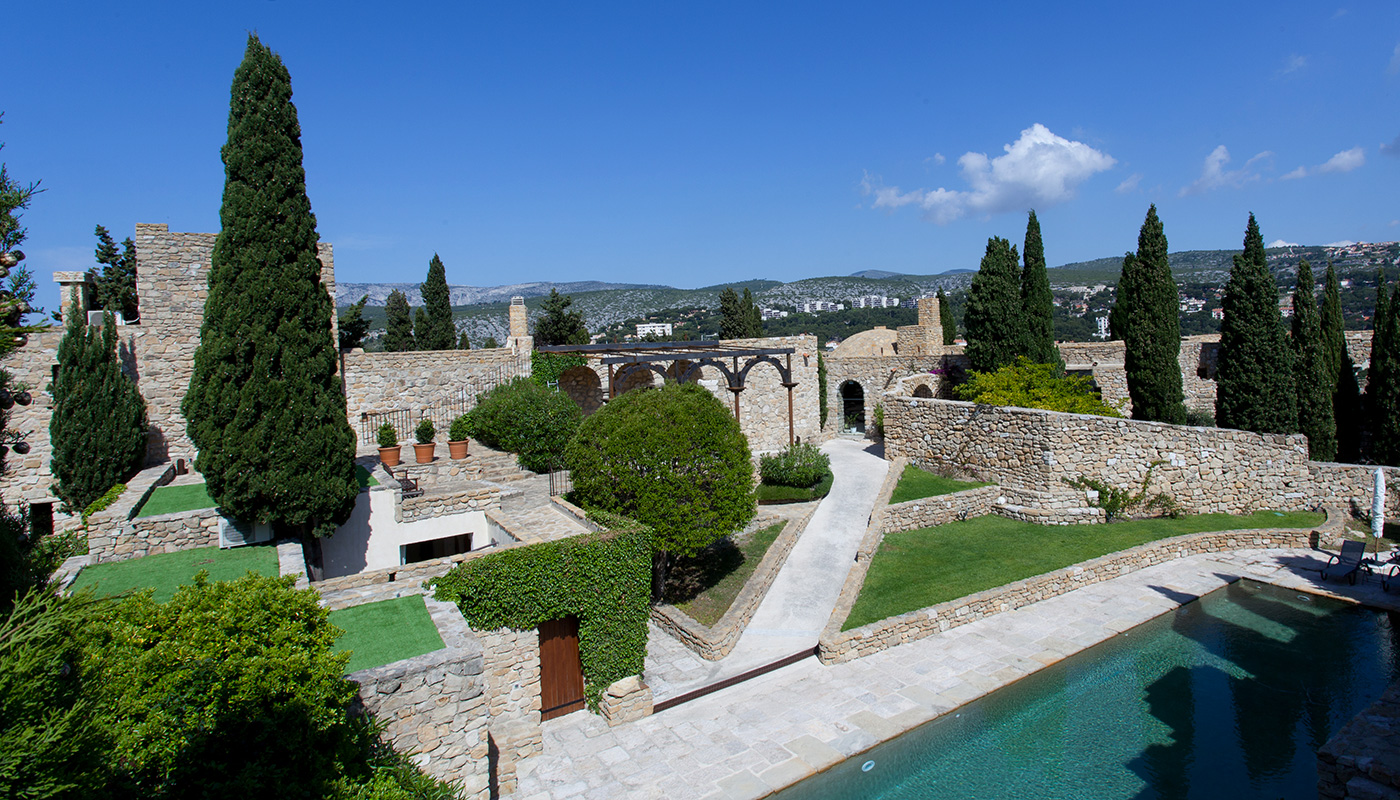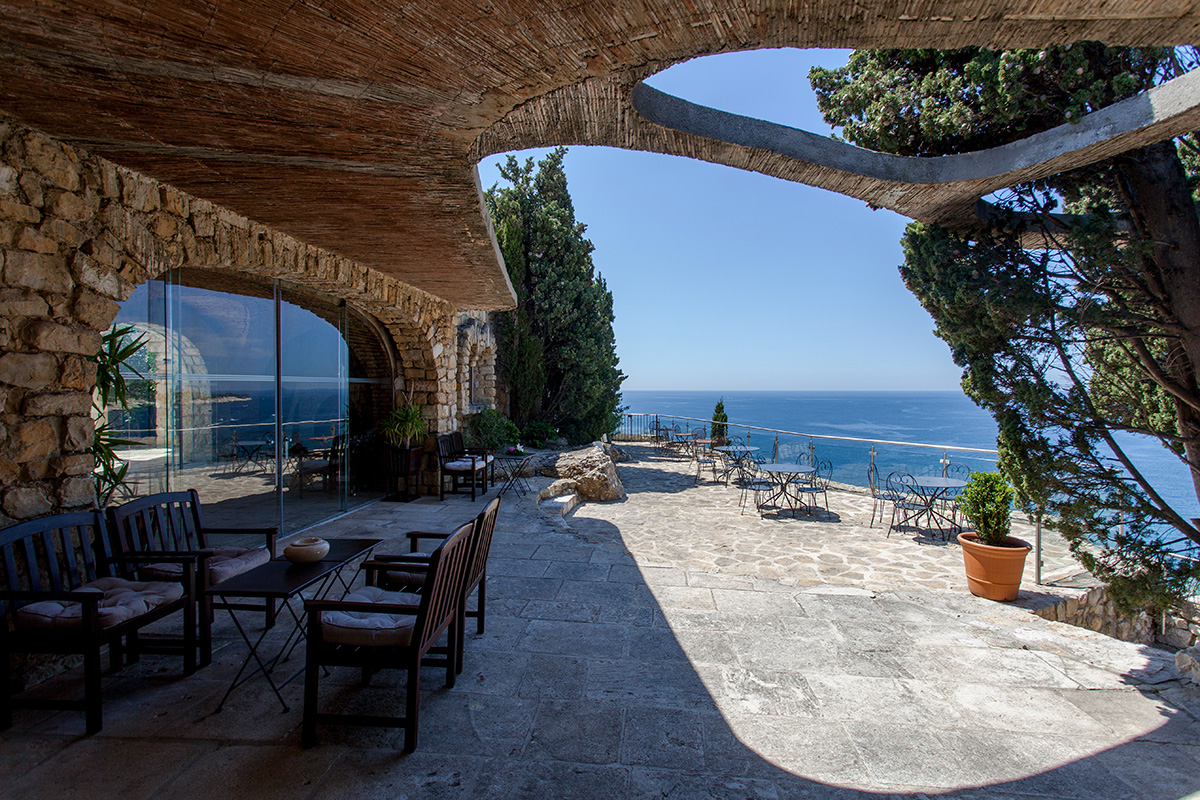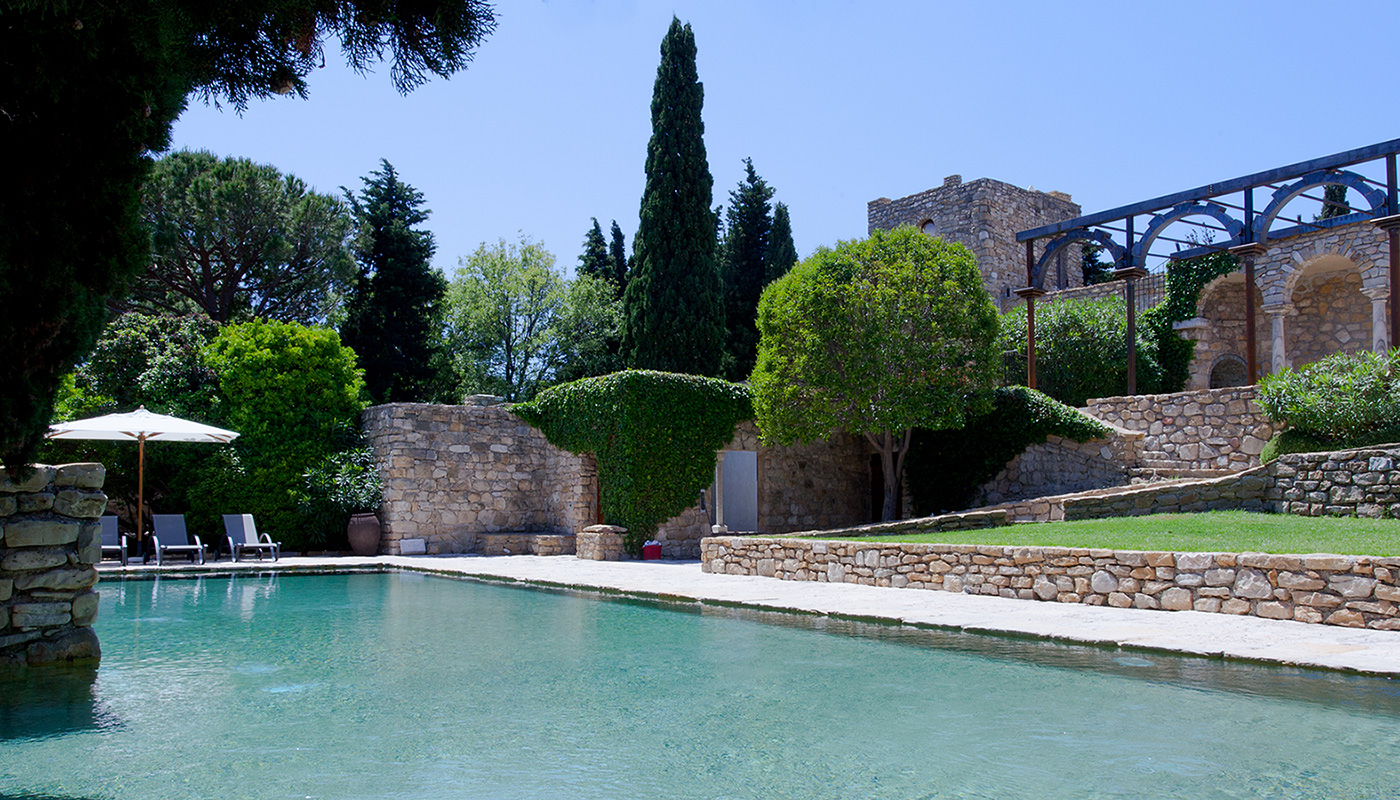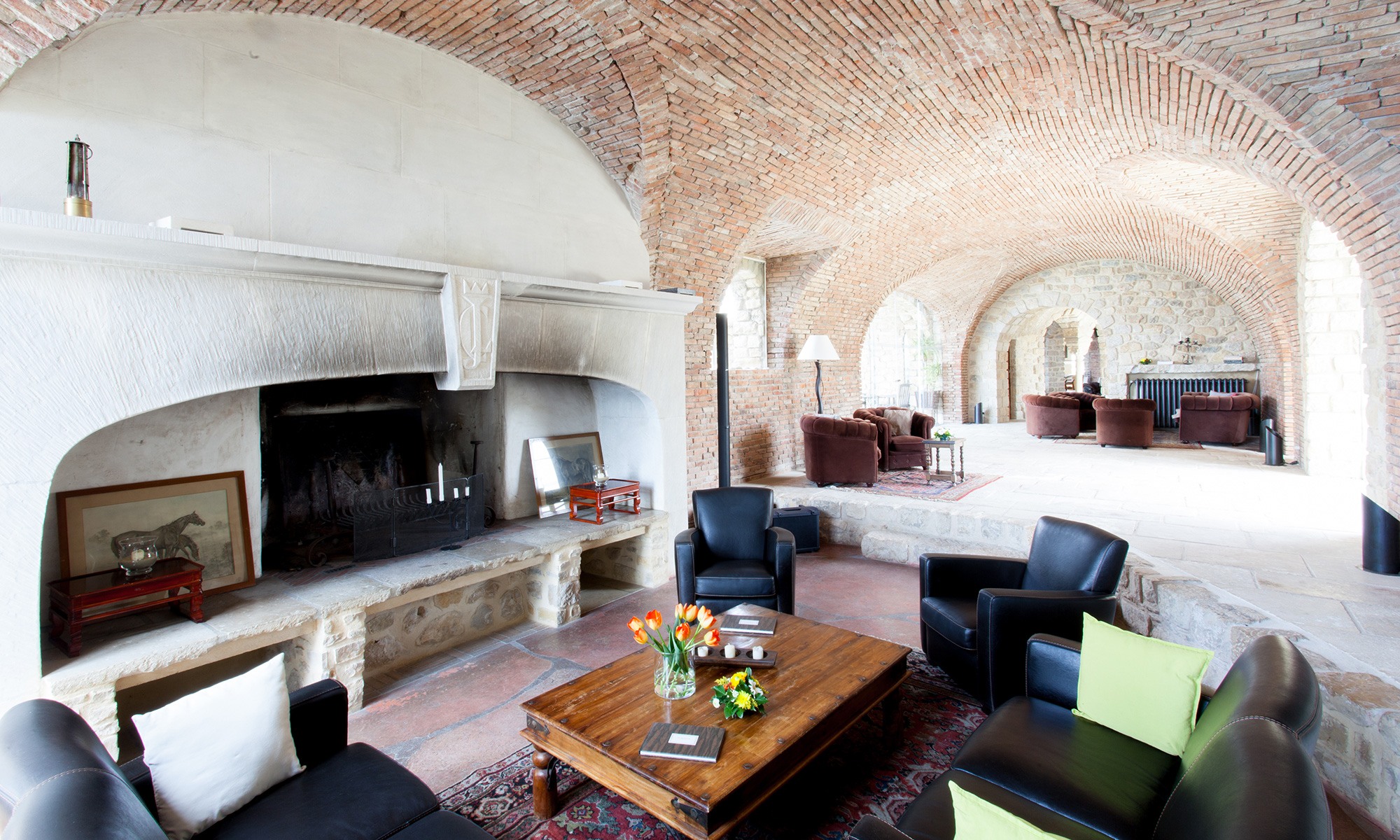An historic fortress
surviving from Medieval times.

The Château de Cassis is a testament to centuries of history. The owners undertook six years of monumental renovation to erase the wear and tear of time and to restore the Château to its natural splendor, creating a warm and peaceful setting.
Take a look
back at history… the castle's
dramatic tale of survival!
Both the interior and exterior design of the castle are respectful of the building's origins, and testify to a rich history that began in the V Century, during Roman times, where an early simple stone and wood watch tower was erected over the ancient city of "Carsicis Portus". During the VIII century, the first fortified walls rise around the tower, the remains of which are today's "Saracen" tower, an excellent testament to the site's rich architectural history.
During the XIII Century the existing castle walls take shape during the "Castum Carcisis" occupancy by the powerful Baux family in 1223. During the Hundred Years War, François des Baux builds a set of bulwarks around the four square 8-metre high towers to strengthen his maritime defenses. This is followed, between 1372 and 1380, with the addition of a well, a baker's oven and a church referred to as Saint-Michel. A sculpted stone, bearing a 16-point star, serves as an emblem for the manor house, another such star appears over the main castle entrance.
In the XV Century there are as many as 50 homes and 250 inhabitants inside the castle walls. Our walkways offers exceptional views of these remains. In 1426 and again in 1473, the fort passes by succession to Louis II, the Count of Provence and the Bishop of Marseille due to the enforcement of an old noble law.
The year 1524 marks a period of terror when the "Imperial" soldiers of Charles Quint, the supreme commander of Bourbon, attack the castle killing men, raping women, plundering houses and destroying ramparts. At the end of the XVI Century, with order returned, the last of the inhabitants abandon the castle for the village of Cassis. Only a handful of holy people and soldiers remain behind to occupy the castle.
At the end of the XVII Century, the Count of Grignan, a provincial governor, acquires new canons and strengthens the castle's defenses.
On February 10, 1794, the young General Bonaparte makes an historic stop at the castle to inspect the artillery.
The artillery is later destroyed during an assault of English soldiers on April 17, 1813. From this time forward the castle's defensive role is reduced. The property is officially ceded by land administrators to a tobacco grower from Saint-Cyr in the Var region, who purchases the castle in 1896.
Since this initial purchase, the Château de Cassis has remained a private property.


